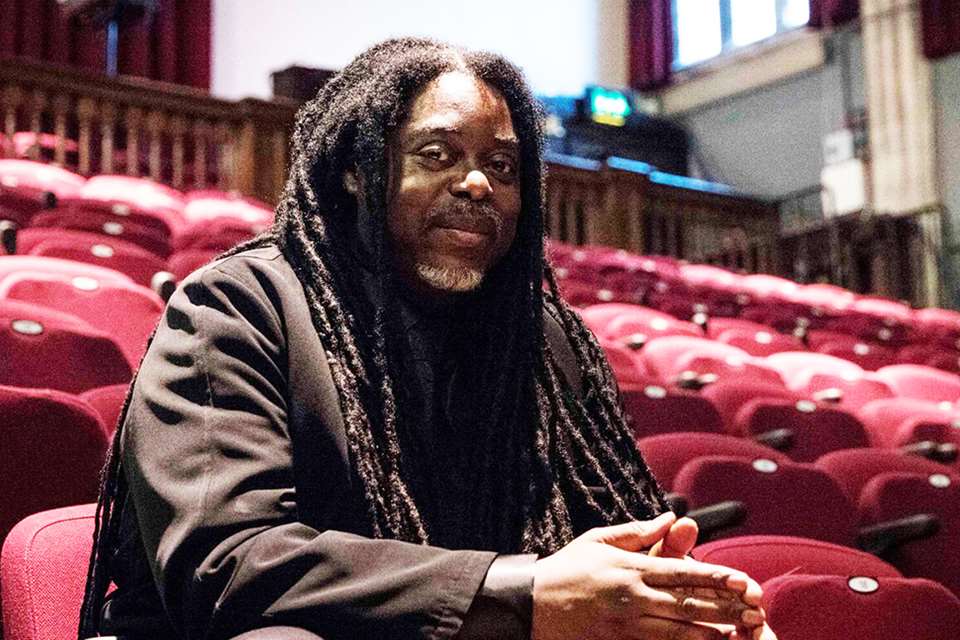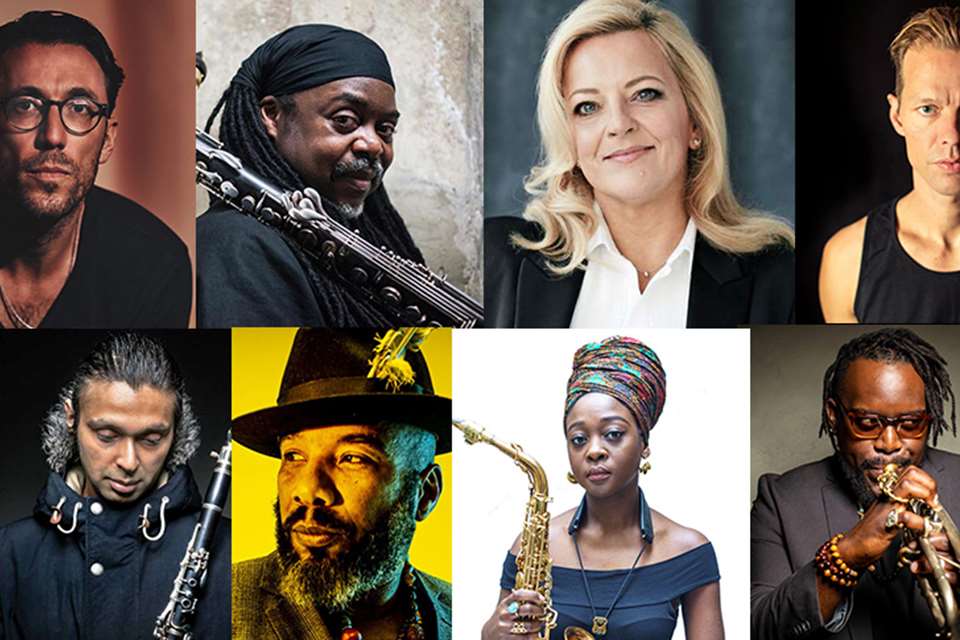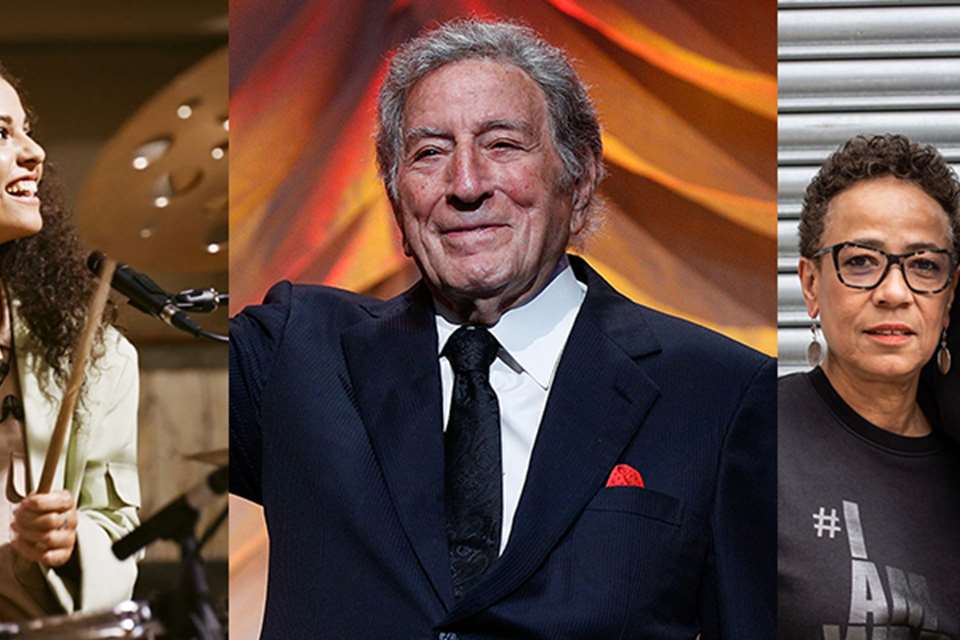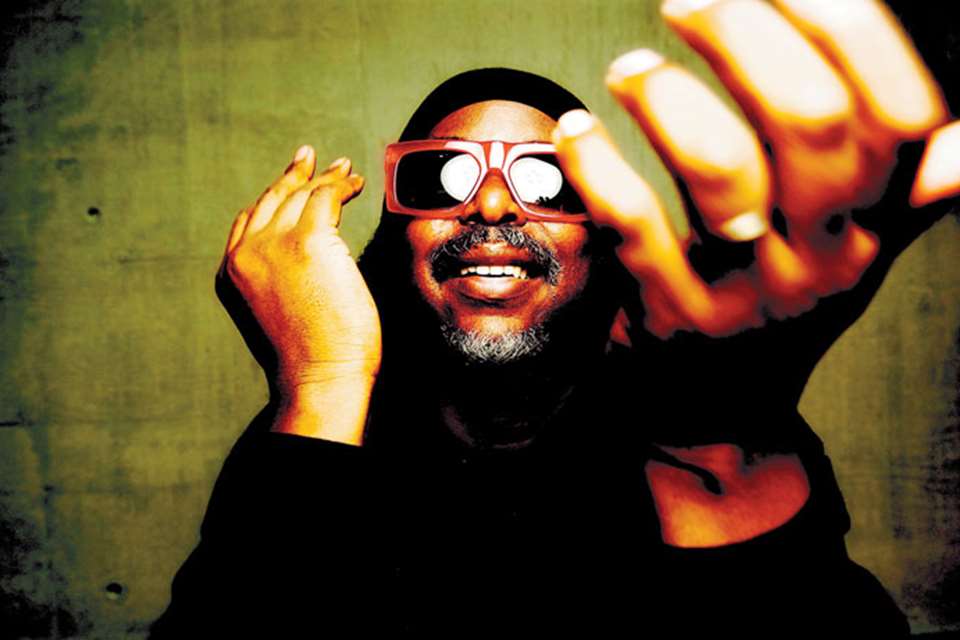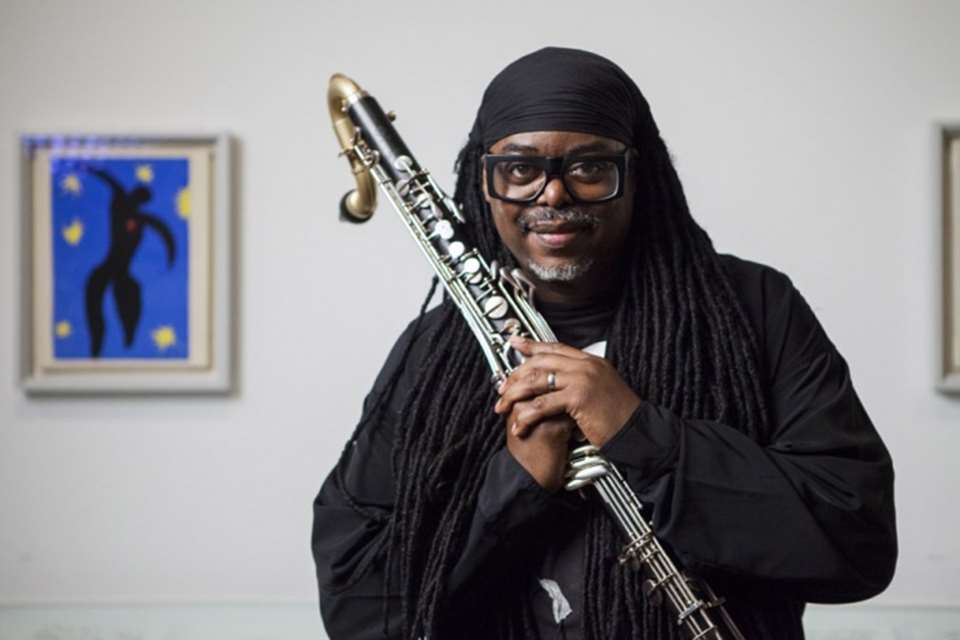Courtney Pine interview: “Even this Covid thing cannot stop us musicians trying to create and represent who we are as human beings”
Stuart Nicholson
Thursday, April 21, 2022
The legendary British saxophonist Courtney Pine looks back on a career packed with countless musical and personal milestones
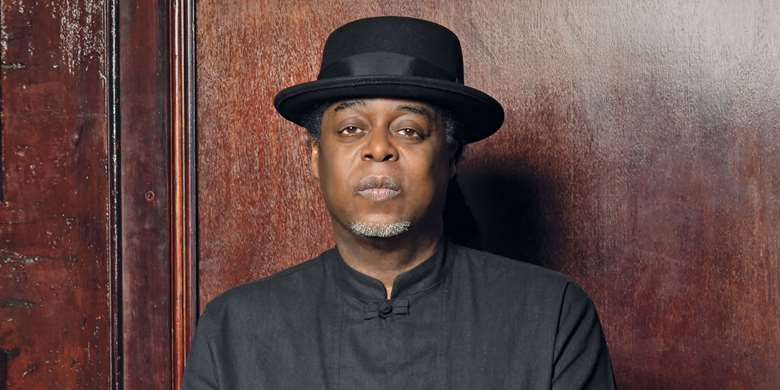
By the mid-1980s, there was a buzz about British jazz. The London scene was enjoying its healthiest complexion since the 1960s. A new generation of musicians were banishing the weary resignation of older musicians with a liberal application of youthful energy and optimism. When Courtney Pine’s debut album, Journey to the Urge Within, was released in 1986 following his highly-publicised signing to Chris Blackwell’s Island label, the moment had come for this youthful brand of jazz to make a breakthrough. Selling as no new jazz album had ever done before in the UK, Pine became the man of the moment. It had to be him, it was his time, and suddenly the broadsheets, Sunday supplements, the NME and the style magazines that had written jazz off as old hat long ago were jumping aboard a fast-moving bandwagon with features on Pine, the Jazz Warriors and the music and musicians bubbling beneath the surface. Pretty soon a full-blown 'jazz renaissance' was under way. It didn’t matter whether Pine was Britain’s 'Number One saxophone player' or not. That was missing the point; he was now the face of British jazz, the epicentre of a jazz explosion that, for most people, had come out of nowhere.
Yet there was a time, back in the early 1980s, when Courtney Pine was more talked-about than heard. Talked about because word was spreading about a genuine talent on saxophone to whom destiny seemed to be beckoning. After checking him out it was clear that the grapevine didn’t lie. A good foundation technique, a solid, centred tone, evidence of due diligence among the recordings of the saxophone gods and enough enthusiasm to overcome the inevitable obstacles that stood in the path of any young musician. At the time, he told Young Observer, that many established musicians weren’t willing to give newcomers a chance: “It’s as if they don’t want us to touch their precious stone. They want us to do everything else except improve on what’s gone already. That’s why they say jazz is dead, because they can’t believe that anyone younger can do it better.”
“I remember coming off that stage and just shaking with excitement and the intensity of the moment and the honour of being in that situation” – Pine on playing with the Art Blakey’s Jazz Messengers
Today, he looks back at those early years with the kind of perspective that distance makes possible.
“Very strange times. I always felt like an infidel, an outsider, somebody who had another culture that was stepping on somebody else’s ground, but once I started researching what jazz was and where it came from, and what it was all about, it got even more confusing, because a lot of the musicians I was working with during those days had set views about what jazz should be. Yet I had seen Freddie Hubbard at Ronnie Scott’s when I was 15. I loved the recordings, the Sonny Rollins Way Out West record, Miles Davis Kind of Blue – all those recordings – but when I went to see the show live, it was just a completely different experience. What they did live was so beyond the albums that I was listening to, I can remember going to Ronnie’s having to talk my way into the gig because they didn’t want me to come in and the seat I got was supposedly the worst seat, on the right hand side of the stage. Freddie Hubbard’s first solo was 15 minutes long, and in the middle of the solo he jumped up with the energy with which he was playing that first solo; and the whole audience also jumped up, and I looked at my mate Frank Tonto and we just lost it. This is what jazz is all about! It was so far from the albums I loved and knew and from that moment I wanted to be a jazz musician, and I wanted to make frequencies that did that to people."
In a career not lacking highlights, incident or achievement, Pine’s confidence was given a huge boost shortly before recording Journey to the Urge Within.
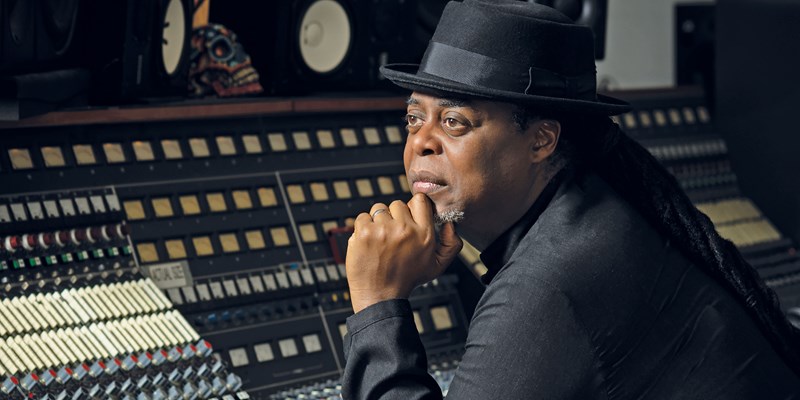
Courtney Pine (photo: Gary Wallis)
“That was an interesting one because Jean Davenport, the promoter and manager, booked the Jazz Warriors to perform at the Shaw Theatre and it turns out Art Blakey was interested in working with us, and Art took me aside, gave me words of wisdom, and before I knew it, he’s paid for a ticket for me to go to America to be in the Jazz Messengers! It was an extraordinary time. We did a show at the Harlem Apollo – I played at the Apollo with Art Blakey! It was a kind of changing of the guard. You had the old Messengers, and the new Messengers which was Kenny Garrett, Wallace Roney, and me. I remember coming off that stage and just shaking with excitement and the intensity of the moment and the honour of being in that situation. I was kind of caught in a situation – I said to Art, ‘I’ve got to finish this album and I’ll see you later!’ But getting to play at the Apollo with people like Wynton Marsalis and Kenny Garrett, Wallace Roney and Mulgrew Miller and then having the invite to come back again and do the American thing, but after recording Journey to the Urge Within, it became much more successful than I thought it would, and I was here promoting it, touring it, and the next thing I know I’m going around the world performing that album and the opportunity to become a Messenger couldn’t be taken.”
Although Pine’s second album was not as successful as Journey in music chart terms (it charted at Number 54), Destiny’s Song + The Image of Pursuance was a huge success aesthetically.
“Word kind of spread with the success of my first album, and when it came to doing a second one there came a choice. ‘Am I going to go the route of asking Sade to sing on a single or am I going down the route of going to do an album that was acoustic jazz based?’ – and I took that route. I really wasn’t interested in being a fly-by-night, Top 10 in the pop charts thing, I wanted a career in jazz. So after having Michael Cuscuna produce my first album, my second album would be produced by somebody like me, of my age who would understand what I am trying to do, and that was Delfayo Marsalis – we had a rapport. Pursuance got released in America and got me recognised there, but what it did was allow me to have a familiarity, a camaraderie, with the Marsalis family and get some really choice words of advice, and that second album really allowed me to get into America. I could have done it by joining the Messengers, but this was another way of doing that.”
“That’s why they say jazz is dead, because they can’t believe that anyone younger can do it better” – Courtney Pine speaking in the early 1980s
A couple of years earlier, in 1981, Wynton Marsalis had been signed by George Butler to Columbia records. The success of his eponymously-titled debut in 1982 saw him become a cynosure for a youthful brand of hard bop-into-post bop that heralded the Young Lions era, taking its name from the collaborative 1960 album of the same name by Lee Morgan, Wayne Shorter, Frank Strozier and Bobby Timmons. However, like critic FR Leavis, who codified the literary tradition along narrow and proscriptive lines, Marsalis took to doing something similar with jazz, espousing certain values without which, he sincerely believed, jazz ceased to be jazz. Although Pine, as much through his recordings as his American connections, he was in the minds of many associated with the ‘Young Lions’ movement, after 1989’s The Vision’s Tale, he laid out his personal music manifesto of inclusivity rather than exclusivity with 1990’s Closer to Home.
“This was a period of time where I had kind of established myself as a touring musician, a touring jazz solo artist. I had a series of albums that were in the charts, and I was touring from Glastonbury to Brixton Academy to Queens Hall in Edinburgh – I found a way to become a solo jazz artist where the likes of Dizzy Reece, Harry Beckett, Joe Harriott, had doors closed in their faces. So by the time it came to do Closer To Home I had options; I didn’t really want to be a single minded, single-style artist, I wanted to show my culture and the uniqueness of what we have here in the UK, and one of those developments was that album, recorded in Jamaica, with Jamaican musicians, playing reggae. My plan was to tour it, present another side of what I did, and that reggae album was really, really something I wanted to achieve, and I couldn’t believe it, but in America it was Number One on the Billboard charts!”
Closer to Home was a bold step, as indicative of Pine’s roots – his parents hailed from Jamaica and from 1981 he had toured in reggae bands, such as Clint Eastwood & General Saint – as his inclusive vision of what jazz might be. His next album illustrated the point. Within The Realms of Our Dreams from 1991, again produced by Delfayo Marsalis, had Kenny Kirkland on piano, Charnett Moffett on bass and Jeff ‘Tain’ Watts on drums. “Extraordinary musicians,” says Pine. “When that album was released, there were critics who said ‘Kenny Kirkland should know better’, as if to say he shouldn’t be seen on a record with somebody like me! And that was going on in the UK, how they viewed this young kid, me, and Kenny Kirkland – absolute legend, composer, soloist, a complete artist; he not only knew how to talk to younger artists like me but he also offered encouragement – a lot of the time, in jazz bands people try to outplay each other, but the best bands are the ones that allow everybody to shine – and Kenny Kirkland was one of those who allowed everyone to come forward, and he definitely exemplified that.”
Following a succession of bold, successful albums for Island/Antilles Records, he declined the terms of contract renewal and went two years without a recording contract until Verve Records in New York signed him.
“A guy called Chris Roberts just said: ‘Well, you sell the most records in the UK, you’re still touring, you’re still doing Glastonbury, can we sign you?’ So, I signed to Verve.”
Once again, a series of successful recordings resulted, before it became clear the way ahead was self-produced albums.
“When I choose a project, I am constantly thinking of the first tune, it’s not just a studio album, it’s a passport for me to do concerts and tours.” Meanwhile, he was under new management – “I signed a deal with Elton John’s company, John Reid Enterprises, and that allowed me to be in places that I wouldn’t really have got to as a jazz artist" – so there was a lot of session work: the 'Perfect Day' record with Lou Reed, sessions for Mick Jagger, Brian Ferry and Kate Bush...
"A lot of things that opened up for me at that time, then Elton John invited me to open for him at the Royal Albert Hall and venues at which you would never see somebody like me. It was just an extraordinary experience just to perform for that audience playing instrumental music.”
In addition to touring and recording, Pine hosted the hugely successful Courtney Pine’s Jazz Crusade each week on BBC Radio 2, and having been awarded an OBE in 2000, he received a CBE in 2009 in recognition of his services to jazz. Then, as his career continued at its breathless pace, came Covid: “This isolation thing hit me for six, because the reasons and the rhymes for performing music seemed to just stop. Ellis Marsalis was a big, big teacher to me, so losing him to Covid [in 2020] was a big deal, and there were a couple of other artists who passed away, such as Wallace Roney. I just stayed inside and got very depressed, and I know a lot of artists did that solo album thing, that became the fashion, but not for me, so what has come out of my isolation period is another duo record with Zoe Rahman, who is a great pianist, great musician, and I think I’m going to call the album Spirituality, because out of this experience the one thing that keeps us going as musicians is spirituality.”
More recently, Jazzwise invited Pine to revisit his distinguished past by performing Journey To The Urge Within as part of this magazine's 25th Anniversary celebrations. But having just come out of Covid restrictions, Pine says: “I didn’t think that I would be playing at Ronnie’s playing my first album! I really thought I would be tucking that away and that would be that, you know? But I jumped at the idea of having a go at these pieces, I really want to hear how they sound today. I want to hear how this current generation plays these tunes, that to me is very exciting! There’s a current crop of musicians who have a different flavour and energy to us back then, and I want to hear how they play them.”
It’s almost 40 years since Pine took British jazz to new heights following the release of Journey to the Urge Within, but now he is witness to the current generation of young black British jazz musicians in the media spotlight, just as he did in his early twenties.
“When I listen to musicians who are playing now, the only difference [to us older musicians] is that they have a wider perspective of the music industry, instead of becoming insular and more about themselves they are thinking of the wider picture – if you look at the groups coming up now, there’s too many to name, but they’re all producing for each other and writing songs for each other, it’s just a fertile ground right now, it’s not just one style, it’s a mixture of styles, and out of that comes something unique, that’s what I have found. What’s great for me, inspiring for me, is that it’s never ending, even this Covid thing cannot stop us musicians trying to create and represent who we are as human beings.”
This interview originally appeared in the April 2022 issue of Jazzwise magazine. Never miss an issue – subscribe today
